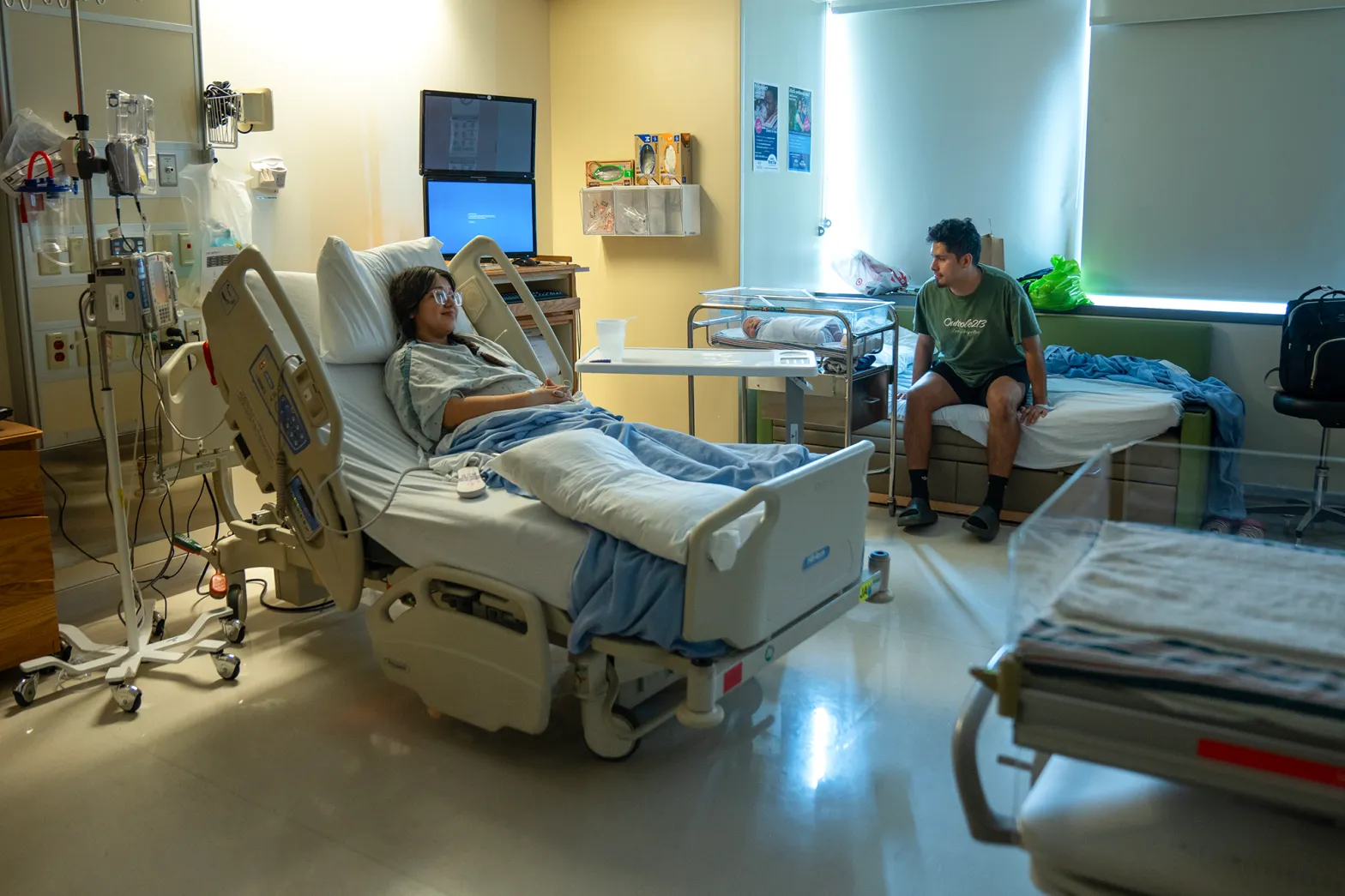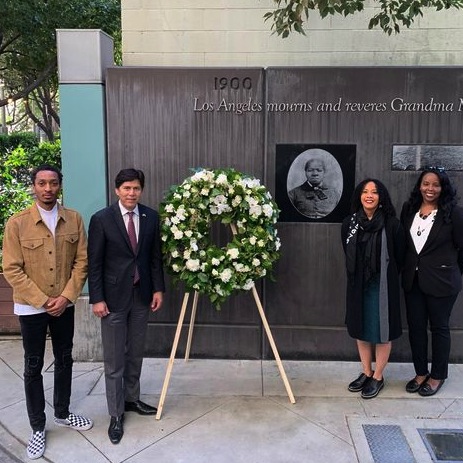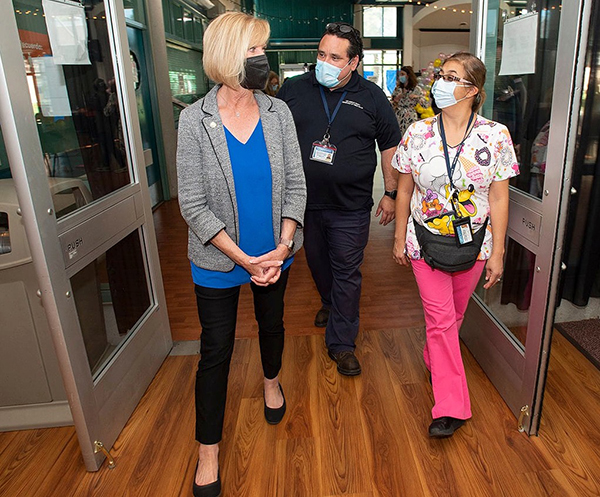Profits Before Babies in LA Hospitals

Blacks and Latinos Affected by 17 Maternity Ward Closures
Those record shutdowns far outpace the region’s declining birth rate and are driven by for-profit hospitals owned by multi-state corporations at a time when California data shows those hospitals were still making millions of dollars for their investors.
Part 1
By KRISTEN HWANG, ANA B. IBARRA and ERICA YEE
CALMATTERS
Over the last decade, nearly 50 maternity wards have closed across California, with more than half shutting down in just the last four years. Seventeen of them were in Los Angeles County, where maternity ward closures have far outpaced the region’s declining birth rate.
Driving the trend in L.A. are for-profit hospitals owned by multi-state corporations. For-profit companies owned 13 of the 17 hospitals that stopped delivering babies. State data shows more than half closed at a time when the hospital was making millions of dollars for investors.
Those who lost the most access were the state’s poorest patients.
In the L.A. area, these decisions disproportionately affect low-income Black and Latino communities, a CalMatters analysis found.
The closures in L.A. overwhelmingly took place in hospitals where up to 80% of patients had Medi-Cal. These populations have some of the worst pregnancy-related complications and mortality outcomes in the state.
One hospital that serves predominantly low-income patients was earning 13 times more than the median hospital operating margin in California when it shuttered its labor and delivery ward.
In contrast, government-run and nonprofit hospitals tend to maintain labor and delivery units even if they are losing money overall, according to state data on hospital finances.
State law requires nonprofit hospitals to address community needs as part of maintaining their tax-exempt status.
Hospitals raking in profits often do so despite losing money on maternity care — the service has long been deemed a money-loser.
That’s in part because Medi-Cal, California’s public insurance program which covers half of all births statewide, has had the fifth lowest reimbursement rate for obstetrics in the country, according to the Kaiser Family Foundation.
Private insurance pays roughly five times more for an uncomplicated vaginal delivery.
Simply put, when for-profit hospitals look at the bottom line and choose to make cuts, one of the first services to disappear is usually maternity care. No law prevents them from doing so.
“Marginalized patients, women particularly … have really observed the decline in their care even in a place like California,” said Dr. Laila Al-Marayati, division chief for obstetrics and gynecology at Keck Medicine of USC and Los Angeles General Medical Center.
This is because the state has failed to prioritize women’s health for decades, increasing Medi-Cal obstetrics rates only recently, Al-Marayati said.
Hospitals with high numbers of Medi-Cal patients frequently can’t break even on labor and delivery. As a result, maternity care takes a backseat to more lucrative hospital services, leading to the wave of recent closures.
Some state lawmakers are trying to slow the loss of services. They’ve characterized what is happening in L.A. as “modern-day redlining” in recent legislative hearings.
“If you start looking at where these are being eliminated, I do think the local counties who are familiar with the communities are going to question why the decisions seem to be made around hospitals that are overrepresented of…people of color,” Sen. Dave Cortese, a Democrat from Campbell, told CalMatters.
Hospitals administrators say the state could make a difference by significantly increasing how much Medi-Cal pays for births to incentivize hospitals to keep these services open.
Last year lawmakers approved a rate increase that went into effect in January, bringing up pay for some obstetric services, but the state’s multibillion-dollar deficit makes further raises unlikely.
Gov. Gavin Newsom has proposed canceling additional increases to address the budget gap, something that lawmakers have rejected in a counter proposal.
“I’m not sure how many more conversations we need to have about some of the crises that we have within our health care space,” Assemblymember Akilah Weber, a Democrat and an obstetrician from La Mesa said during a recent budget hearing on Medi-Cal rates. Weber said Medi-Cal rates are “embarrassingly low in the state of California.”
Residents in southern L.A. have been among the hardest hit. In the last few years they’ve lost two maternity wards: Centinela Hospital Medical Center and Memorial Hospital of Gardena Medical Center. Both hospitals are owned by for-profit corporations and happen to serve the highest proportion of Black Californians in the state.
Centinela Medical Center, which is owned by national chain Prime Healthcare, averaged a 10% five-year operating margin when it stopped delivering babies in 2023.
In contrast, the median five-year average operating margin for all California hospitals was 2%, according to a CalMatters analysis of hospital financial records.
Prime Healthcare and its foundation have closed five maternity wards statewide since 2013, the most of any health system in California.
Elizabeth Nikels, a spokesperson for Prime Healthcare, denied that profitability or staffing shortages had anything to do with maternity ward closures at Centinela or its other four hospitals. She instead pointed to declining demand and low birth rates.
Like Centinela, many hospitals cite decreasing birth rates as a reason for eliminating labor and delivery. California’s birth rate has reached record lows and L.A. County is not immune to the trend, but maternity wards are closing faster than birth rate declines.
In 2023, 7,700 fewer babies were born in L.A. County compared to 2020. Maternity wards closed at a faster pace than that decline, forcing remaining hospitals to absorb about 3,800 additional births over three years, according to a CalMatters analysis of hospital utilization records.
“Prime Healthcare’s priority is always community need and patient care. Service line decisions are based on greatest benefit to patients with financial sustainability not a determining factor,” Nikels said in an email.
The closures of Centinela Hospital and Memorial Hospital maternity wards mean that Martin Luther King Jr. Community Hospital in South Los Angeles now operates one of the last maternity wards in the area.
The hospital gives patients access to a midwife-led program celebrated statewide for its healthy outcomes for both mom and baby.
But MLK, too, is at risk.
Last year the hospital ran a $42 million deficit. A recent $20 million grant from Los Angeles County will keep it open until next summer, MLK’s chief executive Dr. Elaine Batchlor said, but it won’t fix the hospital’s primary funding problem: Medi-Cal doesn’t pay hospitals and doctors enough to keep up, she said.
Medi-Cal reimburses MLK about 71% of the cost of delivery, hospital spokesperson Gwendolyn Driscoll said. The hospital loses more than $2 million annually on its maternity ward. Despite the losses, Batchlor said the maternity ward is integral to the hospital’s mission.
“We serve a vulnerable community that has few other options,” Batchlor said. “The financial distress of our hospital threatens that mission, but we will continue to provide the care that we can as long as we’re able.”
Part 2 Next Week
Supported by the California Health Care Foundation (CHCF), which works to ensure that people have access to the care they need, when they need it, at a price they can afford. Visit www.chcf.org to learn more.
Kristen Hwang is a health reporter for CalMatters. She can be reached at kristen@calmatters.org
Ana B. Ibarra covers health care for CalMatters. She can be reached at ana@calmatters.org
Erica Yee is a data reporter who collaborates frequently with the health, education, inequality and environment teams. She can be reached at erica@calmatters.org
CalMatters.org is a nonprofit, nonpartisan media venture explaining California policies and politics. Published with permission of CalMatters.





